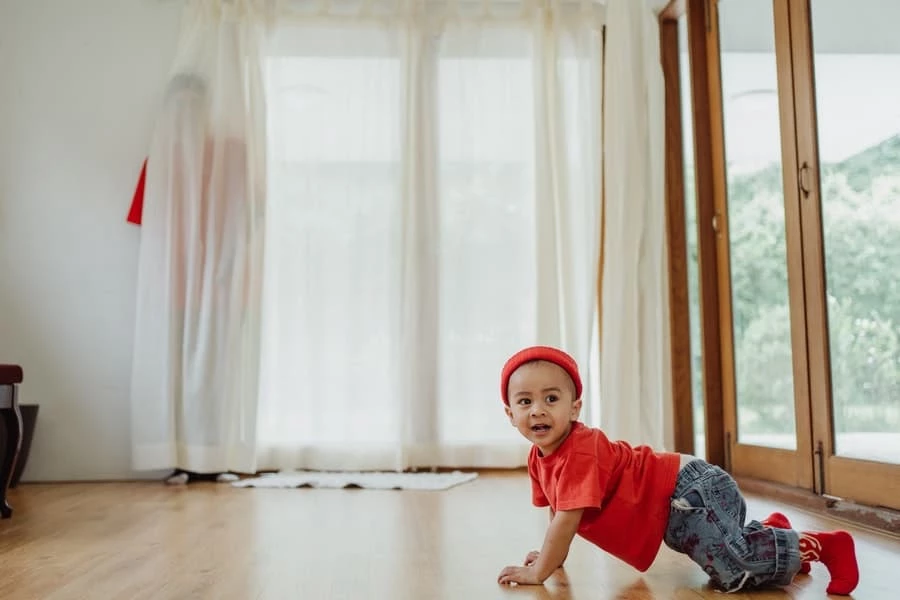According to the CDC, more than 2000 children suffer fatal injuries in at-home accidents every year. That’s a staggering number, and it’s something that every parent needs to take seriously. The most common accidents are falls, drowning, poisoning, suffocation and burns. It’s possible to prevent many of these accidents by taking simple precautions. Here are some of the most common hazards and how to protect your children from them.
Understand The Hazards
Hazards vary from home to home, so take time to understand the specific dangers in your house. They also depend on the children’s age, level of understanding, and their mobility. You’ll need to adjust as your children grow.
Make a list of the hazards and then eliminate or take precautions against them. Some of the most significant risks for children under one year old are poisoning and falls. Toddlers also risk drowning in bathtubs, buckets, sinks and pools.
Preschoolers are most likely to suffocate in mattresses, pillows and plastic bags. School-age children are most likely to drown in open water. They are also at risk of poisoning by medicines and cleaning products. Some common hazards that you might not think about include:
Dirt and Bacteria
Kitchens, bathrooms and other areas where dirt and bacteria build up quickly can be a hazard to kids. They can easily touch something dirty and then put their hands in their mouths, leading to illness. Ensure these areas are clean and that all bacteria-containing surfaces, like kitchen counters, are regularly disinfected.
Quickly take care of problems such as clogged toilets, blocked drains, and leaky faucets. Regular drain cleaning can help keep bacteria and other pathogens from building up in your home and causing health problems down the road.
Unsecured Furniture
Heavy pieces of furniture like bookcases and large armoires can easily tip over onto young children who love to climb and pull themselves up on them. Anchor furniture to the walls with brackets or straps to keep it from toppling over.
Toxic Substances
Even everyday household products like bleach, ammonia, and dishwashing detergent can be deadly if ingested by a child. Store these and other hazardous substances out of reach and in child-safe containers.
Electrical Cords
Children can suffer injuries when playing with electric cords. It’s even more hazardous when it’s a live wire. Hide cords behind furniture or cord covers and keep plugs out of reach.
Appliances
Dishwashers, clothes dryers, and other appliances can also be hazardous to children. Be sure to keep these machines in working order and unplug them when not in use.
Stairs
Stairs can be dangerous for toddlers just learning to walk and older children who like to run up and down. Keep the stairs clear of toys and other obstacles. Install gates at the top and bottom to keep children from falling.
Hot Surfaces
Children can easily suffer burns when playing near or touching hot stoves, ovens, irons, and other appliances. Make sure these are turned off and unplugged when not in use. Use stove guards to keep children from opening the oven door or reaching up on counters near hot appliances.
Window Coverings
Cords on window coverings can be a strangulation hazard. Move cords out of reach or install cord stops to keep them from hanging down.
Broken Glass
Broken glass and other sharp objects can be hazardous for children. Keep glass items off the floor or in drawers with child-proof locks.
Clutter
Clutter can be a hazard for children who like to explore and play. It can also lead to falls. Keep floors clear of toys, books, and other items to reduce the risk of falls. Because kids love putting objects into their mouths, pick small items up immediately when they fall down and regularly vacuum the floors.
Water Hazards
Always supervise children around water and don’t let them play in water with an adult’s permission. Install a drain cover in tubs to prevent hair from getting caught and keep toilet lids closed when not in use. Never let the children wander around the yard unsupervised if you have a swimming pool. Better still, install a child fence around the pool to prevent accidents.
Outdoor Hazards
Large objects like lawn furniture, grills, and other outdoor equipment can be dangerous for children. Keep these items stored away when not in use. Ensure the yard is free of holes, ditches, and other hazards that children could fall into.
Make Your Home Safe
Once you’ve identified the hazards in your home, it’s time to take action. You can make your home safe in several ways.
- Fix any problems you have with your home’s plumbing and electrical system. Hire a professional to take care of any hazardous tasks.
- Install child-proof locks on cabinets and drawers that contain harmful substances.
- Anchor furniture to the walls.
- Install gates at the top and bottom of the stairs.
- Cover electrical cords with cord covers or hide them behind furniture.
- Keep hot surfaces out of reach.
- Install window coverings with cord stops or move cords out of reach.
Have Someone Monitor The Kids
Even if you have a child-proof home, accidents can still happen. You might not always be around to monitor the kids and prevent them from getting into trouble. That’s why it’s crucial to have someone else keeping an eye on them when you’re not around. Key points to note include:
- A responsible adult should always be with the children when they’re home.
- If you can’t be there, consider using a babysitter or a nanny to watch the kids, even if they are older.
- If you parents or other family living close by, ask them to help watch the kids if you need to be away, or need some time alone.
Additionally, regularly inspect your home to ensure that it’s always free from hazards.
Let The Children Know The Risks
It’s not enough to make your home safe for children. Let them know what they can and cannot do at an appropriate age.
- Teach them the dangers and why they shouldn’t touch certain things.
- Explain why it’s vital for them to stay away from stairs and other potentially dangerous areas.
- Teach them to walk carefully, not to run, especially when going down the stairs.
- Teach them why it’s essential to stay away from electrical outlets and cords.
Children’s Safety Is Everyone’s Responsibility
As you will realize, hazards change as the kids grow. It’s also every adult in your home’s responsibility to maintain their safety. Stay on top of things and regularly check your home for potential risks. You’ll have more peace of mind, and your children will be safer.







